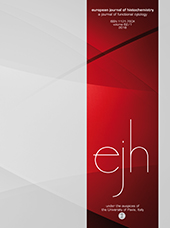 Smart Citations
Smart CitationsSee how this article has been cited at scite.ai
scite shows how a scientific paper has been cited by providing the context of the citation, a classification describing whether it supports, mentions, or contrasts the cited claim, and a label indicating in which section the citation was made.
RETRACTED: Neural stem cell conditioned medium alleviates Aβ25-35 damage to SH-SY5Y cells through the PCMT1/MST1 pathway
Alzheimer’s disease (AD) is a progressive, neurodegenerative disease. Accumulating evidence suggests that protein isoaspartate methyltransferase 1 (PCMT1) is highly expressed in brain tissue (substantia nigra, blue plaque, paraventricular nucleus). In this study, we investigated the effect of neural stem cell conditioned medium alleviates Aβ25-35 damage to SH-SY5Y cells by PCMT1/MST1 pathway. Results demonstrated that Aβ25-35 significantly decreased the cell viability in time and dose dependent manner. However, Neural stem cell-complete medium (NSC-CPM) or NSC-CDM had inhibitory effect on toxicity when fibrillation of Aβ25-35 occurred in their presence and NSC-CDM had a better inhibitor result. An increase of the PCMT1 expression levels was found in Aβ25-35 + NSC-CDM group. sh-PCMT1 significantly reduced the PCMT1, the cell viability and inhibited the protective effect; induced apoptosis and increased the expression of p-MST1. Overexpression of PCMT1 group reversed the effect of Aβ25-35 inhibited the cell viability and Aβ25-35 induced the apoptosis. In conclusion, NSC-CDM corrects the damage of Aβ25-35 to cells by increasing PCMT1, reducing MST phosphorylation.
Downloads
Publication Facts
Reviewer profiles N/A
Author statements
- Academic society
- N/A
- Publisher
- PAGEPress Publications, Pavia, Italy
Citations
10.3390/app11052219
10.3390/molecules26103001
How to Cite
PAGEPress has chosen to apply the Creative Commons Attribution NonCommercial 4.0 International License (CC BY-NC 4.0) to all manuscripts to be published.

 https://doi.org/10.4081/ejh.2020.3135
https://doi.org/10.4081/ejh.2020.3135





